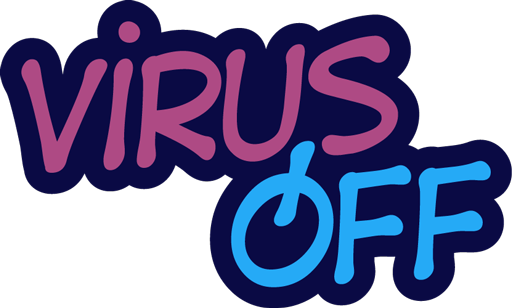Plus HIV Magazine has prepared a list of side effects of HIV treatment.
SIDE EFFECT: DIARRHEA
Prevalence: Very common; in fact, diarrhea is one of the most common reasons people with HIV stop or change their medications.
Treatment: Three options: over-the-counter antidiarrheal medications such as Imodium (loperamide); Lomotil (diphenoxylate and atropine), which slows the bowels to control diarrhea and is commonly prescribed for cancer patients; or Mitezia (crofelimer), the only drug approved by the Food and Drug Administration to relieve non-infectious diarrhea in HIV-positive people. Derived from the red sap of the Croton lechleri plant, Mytesi is only the second botanical prescription drug approved by the U.S. Food and Drug Administration.
SIDE EFFECT: MOOD CHANGES, INCLUDING DEPRESSION AND ANXIETY
How common: According to a 2019 study published in the International Journal of Environmental Research and Public Health, 39% of people living with HIV are currently experiencing depression. AIDS Beacon previously reported that 63% of HIV-positive participants “reported symptoms of depression currently or at some point in the past. Overall, 26% of patients reported having suicidal thoughts, and 13% of participants reported having attempted suicide in their lifetime.”
Treatment: The most effective are selective serotonin reuptake inhibitors (SSRIs). According to the National Institutes of Health, medications that have been shown to be effective in treating depression in patients with HIV include (generic names) imipramine, desipramine, nortriptyline, amitriptyline, fluoxetine, sertraline, paroxetine, citalopram, escitalopram, fluvoxamine, venlafaxine, nefazodone, trazodone, bupropion, and mirtazapine.
SIDE EFFECTS: HYPERTENSION/HIGH BLOOD PRESSURE
How common: very common. The U.S. Department of Veterans Affairs, for example, reports that 45% of its patients with HIV are also diagnosed with hypertension. Last year’s report showed that a quarter of all people with HIV also have hypertension, with this comorbidity being most common in North America and Western Europe. A review of the findings published in 2018 in the journal Hypertension suggests that chronic inflammation associated with HIV and antiretroviral therapy is a major factor in the high incidence of hypertension.
Treatment: Stop smoking. Medications include vasodilators (hydralazine), antihypertensives (Cozaar, Avapro, Diovan), ACE inhibitors (Prinivil, Lotensin), calcium channel blockers (Norvasc, Procardia, Plendil), and diuretics (Microsid, Diuril, Zestoretik).
CONCOMITANT DISEASES: OSTEOPOROSIS AND OSTEOPENIA
How common: Osteopenia and osteoporosis are two forms of bone density loss, with osteoporosis being the more severe disease. Many more people with HIV have osteopenia (60%) compared to osteoporosis (10-15%). The lower your body weight, the more susceptible you are to both diseases. Because of this, fractures are more common in young people living with HIV.
Treatment: Bisphosphonate therapy with the addition of vitamin D and calcium, as well as the drugs Fosamax, Boniva, Actonel, Atelvia and Reclast. And just this year, a study presented at the Virtual Conference on Retroviruses and Opportunistic Infections found that a “short course of alendronate” (the generic name for Fosamax and Bonosto) at the start of tenofovir-based antiretroviral therapy may help prevent bone loss.
CONCOMITANT PATHOLOGY: CARDIOVASCULAR DISEASE
Prevalence: second leading cause of death among people living with HIV.
Treatment: May include a variety of approaches. There are statins that lower cholesterol levels, such as Crestor, Lipitor, Zocor, Vytorin, Lescol, Mevacor, Altoprev, Livo, Pravacor, Advicor, and Simlup. Programs that help you quit smoking, lose extra pounds, and move more are also useful. Reduce your alcohol and sodium intake. If your blood pressure is outside the healthy range, your doctor may prescribe medication. Options include ACE inhibitors (Vasotec, Prinivil, Zestril, Altace); angiotensin II receptor blockers (Cozaar, Atacand, Diovan); beta-blockers (Lopressor, Toprol XL, Corgard, Tenormin); or calcium channel blockers (Norvasc, Cardizem, Dilacor XR, Adalat CC, Procardia).
CONCOMITANT PATHOLOGY: DIABETES MELLITUS.
How common it is: There is a type of diabetes caused by damage to the pancreas caused by HIV medications. It is less common than the other two types, type 1 and type 2, but no less dangerous.
Treatment: Controlling blood sugar, medication, insulin therapy, and proper nutrition are the main treatments, as well as regular checkups with your doctor to detect complications that can be easily missed. Diabetes medications include Lantus, Januvia, Humalog, NovoRapid, Victoza, Farxiga, and about a dozen other drugs.



